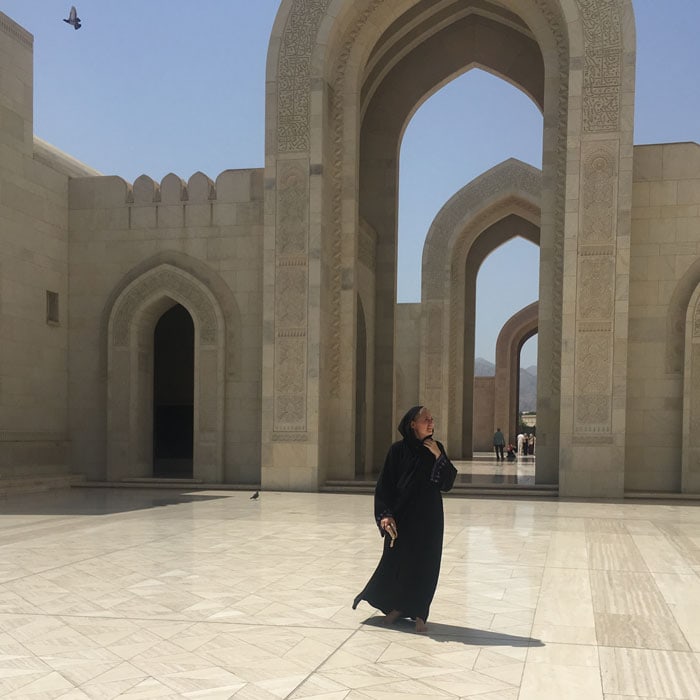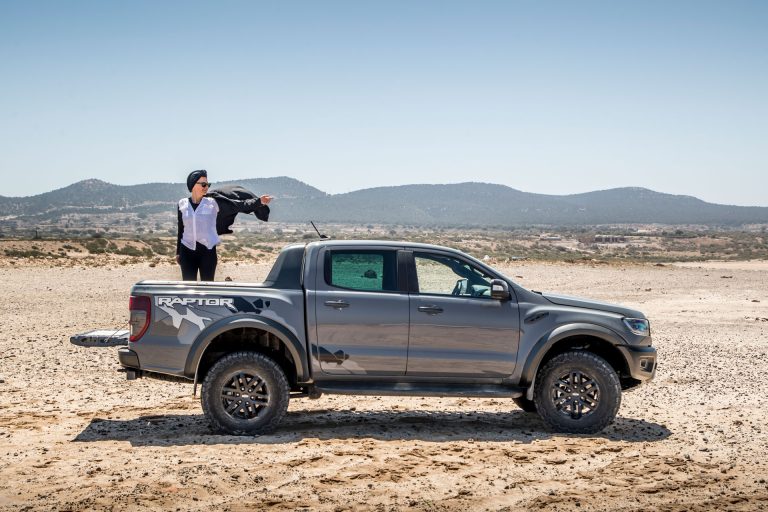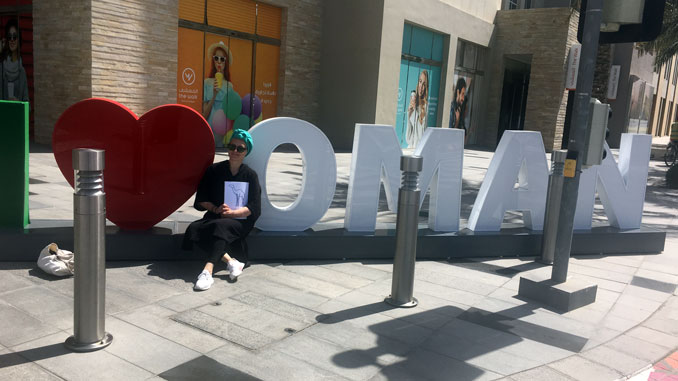Textile etiquette for Oman – wear clothes appropriately and respectfully

Oman is a paradox as it lives and breathes: Hardly any other Arab country is as traditionally inclined as the Sultanate on the Indian Ocean, which is shaped by Islam. Authenticity, customs and above all mores are high in the favor of conservative Omanis and yet show themselves to be so modern that one would almost not have expected them to be. Oman is way ahead of the rest of the world in terms of tolerance. Omanis are open-minded, kind people whose friendliness is already evident around the outermost folds of their eyelids. They embrace the world, welcome strangers as if they were members of their own family, and always have an insider tip shouted over the garden fence at the ready.
The right clothes, a sign of respect
The smile that dances on their lips is genuine and an invitation for travelers to fully immerse themselves in Omani culture. At the same time, it is only right to show the same amount of respect to the warm-hearted and helpful Omanis as a traveler. This doesn’t necessarily mean that you have to cover yourself from head to toe around the clock, but it does mean that there are a few basic rules for choosing the right clothes. Because the textile freedoms of Europeans are not welcome in Oman. For a coexistence on eye level it is absolutely recommended to wear basic in Oman clothes that follow the free rules of human decency.
Besides this post, I also have interesting info on general Arabic etiquette and Islamic prayer for you!
Traditional fashion in Oman – clothes of the locals
A floor-length, deep black robe – the so-called “abaya” – is characteristic for the outer appearance of an Omani woman. If you meet Bedouins, you will most likely discover a face mask, the “Burqa”, on the women. It is especially designed to protect the delicate skin of the face from sand and sunlight.

You can recognize the typical Omani by his sheer white robe – known as “Dishdasha” or “Kandora”. The head of the Omani man is usually adorned with the plate-shaped cap “Kumma” with its interesting patterns – sometimes also a headscarf called “Massar”.

Suitably dressed in Oman – clothes for non-Muslim women
How should I not dress as a woman in Oman?
Even if it’s insanely hot and you’d love to rip your clothes off in Oman’s dizzyingly high temperatures,“short with a defined silhouette” is clearly inappropriate for the Sultanate. The same goes for tight-fitting tops, skirts and dresses, which you should ideally not even pack in your suitcase.
Tank tops and shirts with spaghetti straps are best left at home. The same goes for skimpy shorts. By the way, it’s not a good idea to show up belly-less or in transparent outfits as well as finally wear out your new Deconstructed Jeans. Even though ripped denim is all the rage in Europe, it won’t find fans in Oman – and not just because the knees peek out of the darkness through the slit in the fabric anyway, but because the destroyed character simply brings with it an “untidy” aura.
How should I dress as a woman in Oman?
Walle-walle is the trump card for clothing in Oman. The wider and more flowing your vacation wardrobe, the better prepared you’ll be for any eventuality. In addition, the air currents can better get caught under your garment and thus fan you from below the much-needed fresh air. The lighter your clothes are, the less they will heat up due to the intense sunlight. Basically, you should make sure to cover your shoulders as well as your décolleté and knees. This also has the advantage that you protect the skin areas that would otherwise be mercilessly exposed to the scorching sun from a painful sunburn.
Part of keeping your appearance neat is tying your hair up or covering it with a scarf.
Non-Muslim men in Oman – smart clothing selection
As a man, you generally have it a little easier in Oman, as you do not have to subject your hair to the dress code. It goes without saying that you should not arrive in Oman in a ballerina outfit with a smurfy muscle shirt. Upper arms should generally be kept covered.
As is customary in a European hotel from the 4-star category, you are well advised to pack a selection of long pants in your suitcase. Even though linen pants are chic and airy and leave a cooling effect on the skin, you should be aware that they crease with preference. Therefore, preferably use crease-resistant fabrics or pack a steam brush for emergencies and spontaneous freshening up on the spot.
Shorts are unusual and reserved for swimwear or sportswear, because in Oman they symbolize the character of underwear. With the swimsuit better not show anything.
Surely you also have a nice selection of t-shirts. Ideally, you should pay some attention to their prints, because not all motifs and lettering are as popular in Oman as they are at home.
Righteous appearance: the be-all and end-all in Oman to wear clothes in style
If you wear piercings or tattoos, it is recommended to cover them, especially in rural areas. This is because according to the teachings of Islam, there is no provision for changing the body.
Also, make sure you have well-groomed footwear that still looks good when you take it off at an Omani’s front door when you are invited to their home privately. Shoes are considered unclean and should therefore always be reserved for walking in the open air.
Clothing should be basically clean and well-groomed. Keep in mind with your overall appearance that you could always be embarrassed to depend on the locals for help. Since you certainly don’t think twice about your appearance in emergencies, there is rarely a second chance for a positive first impression. If you are traveling with children who have not yet reached their teens, the dress code does not apply to them.
How do I dress in Oman at the beach / when swimming?
If you’re not sizzling in the sun on the beach or doing your laps in an Omani swimming pool, you should cover up your swimwear as soon as possible. Wearing them in public areas is prohibited in Oman. T-shirt and shorts are quickly slipped over and promptly relieve you of such problems. Also, a swimsuit is preferred over a bikini. “Topless” or even nudism are completely frowned upon. As for shoes, on the other hand, flip-flops and sandals are allowed even outside the hotel facilities.
Healthy in Oman – complement clothing with accessories sensibly

You should always carry headgear and sunglasses with you. If you don’t and venture out into the desert, the worst that can happen is snow blindness – corneal damage to the eye caused by UV rays.
Furthermore, it is advisable to always have a thin jacket with you. Rooms iced by air conditioning, evenings in the desert and stays in the mountains can become sensitively fresh.
If you are traveling in the mountains or in the desert, sure-footed, closed shoes with a good tread are recommended – not least to protect you from scorpions and snakes as well as hot sand.
Visiting mosques in Oman – choose clothes decidedly accurate
The Great Sultan Qaboos Mosque in Muscat is the largest house of worship in the sultanate. Together with its smaller sister of the same name in the southern and significantly more conservative Salalah, these are the only two mosques that non-Muslims and tourists are allowed to enter. They impose strict access regulations on travelers, which are meticulously checked at the entrance.
In addition to the dress code already mentioned, as a woman your hair is mandatory to cover. Men may decide for themselves whether to wear headgear. Also, the ankles on the feet must be covered. As a non-Muslim, you are not expected to perform ritual ablution– regardless of gender. On the other hand, it is obligatory for every visitor to take off his shoes before entering the prayer hall. So that this can be done quickly, loafers or simple sandals are suitable. They are stored in front of the mosque in small boxes.
Make sure not to enter the mosque barefoot if possible, but in neat socks. The floor is touched with the forehead during Muslim prayer and should therefore be kept clean. If you want to pay separate respect to the Muslims, you enter the mosque with your right foot and leave it with your left foot.
Dress code for bathing in wadis – it depends on the company
Taking a refreshing dip in one of the sensational natural wadis is one of the best thoughts ever in the hot locations of Oman. However, this idea is not only tourists. Wadis are also a favorite place of the locals. These often bathe in the front parts. The back areas are mostly used only by tourists. So if you plan to enjoy an authentic wadi experience in the company of Omanis, ideally you should do so wearing only long pants and a T-shirt. Also, make sure that the shirt is absolutely opaque. A wet T-shirt effect is absolutely out of place here. According to Islamic tradition, women and children in particular should be protected from the sight of naked skin.
Show tolerance towards your hosts and be an example to those who have to be reminded of such a dress code first by the specially erected notice boards. If there are no locals present when you jump into the cool water, it is also okay to plunge into the water in just your swimwear.
Credo: With a few principles you will wear clothes in Oman in a proper and respectful way.
Besides this post, I also have interesting info on general Arabic etiquette and Islamic prayer for you!









